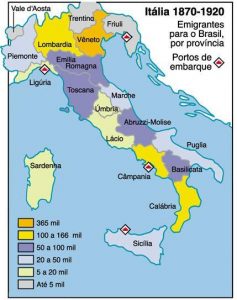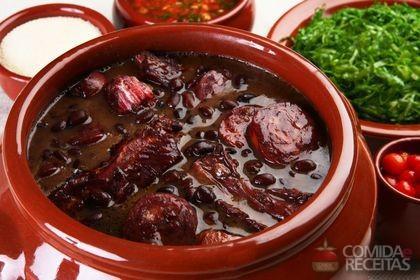The Exquisite Sociohistorical Intersection of Brasil and Italia by Willi Freire
Throughout the duration of my life, I have repeatedly questioned the prominence of Italian cuisine within the context of Brasil. Why did I consume so many pasta dishes, pizza specialties, and why do Italians as a community of people still resonate so deeply with me? These are the fundamental questions that prompted me to explore the vast intersection between Brasil and Italia. In this paper, I will examine the foundation of the connection between these two distinct groups historically, while also exploring the anthropological effects on the population of Italian immigrants in Brasil, which was primarily showcased through the formulation of identity premised around cuisine, language, work, religion and many other factors aligning with Italian values as a whole. Furthermore, towards the latter half of this research project, I will delve into modern-day narratives of persons who have reconciled this dynamic themselves, whether it be throughout the trajectory of their life, or through a deeper glance into this beautiful overlap between these two robust cultures that continue to light up the world today.
First and foremost, it is necessary to comprehend characteristics of Italian immigrants and their original points of origins, as these understandings can help one more closely grasp the synergies between these two groups. The segmentation of such immigrants is best seen by their occupation and socioeconomic status overall: Grain traders shifted over to Odessa, while iron miners fled to Belgium and Luxembourg; construction workers, regardless of skill, worked on infrastructure abroad, primarily in Switzerland, Portugal, Egypt and the United States; lastly, the framers followed a movement to the southernmost parts of South America, particularly to Argentina and Brasil. In terms of numbers, the majority of people came from the north, specifically Veneto (see Appendix, Figure 1); the remaining half were comprised of Italians, who originally resided in the central and southern parts of Italy. The way in which these numbers came to fruition can be seen by two distinct transoceanic migration experiences. First, the time window from the unification of Italy and the end of the century, immigrants overwhelmingly came from the North and migrated to Brasil, Argentine and the United States, with a purpose of “own[ing] and cultivat[ing] a piece of land” (Andreola 11). The second period is known as the Giolitti Era, from the start of the first century up until the adjournment of Wolrd War I—this period is almost entirely comprised of southern migrants who primarily ventured to the United States. To further break up these movements, this paper is more integrally focused on the first movement of Italian migrants to Brasil. Hence, during that first period, there are two natural distributions: firstly, from 1876 to 1896, the flow of immigrants flocked to the southern inhabited lands of Brasil and Argentina, whereas, from 1896 to 1901, was heavily concentrated to São Paulo to the coffee fazendas in the area (Andreola 11). Lastly, Italian immigration to Brasil was characterized as a family-oriented immigration, as opposed to Italian immigration to Argentina and the U.S. which was more so done on an individual basis. These historical insights are imperative in understanding the compatibilities between these two nations as one further deconstructs this dynamic relationship from a cultural perspective.
Furthermore, it is important to understand the key events that sparked Italian immigration to the western hemisphere and other adjacent nations. A Brasilian historian who greatly studied Italian immigration, Paulo Pinheiro Machado, boils down the principal cause of Italian immigration to one concept:
‘“A grande emigração europeias durante o século XIX foi, principalmente, consequência das transformações agrárias processadas pelo capitalismo. O campo tornou-se expulsar de pessoas em todos os países europeus em épocas distintas, com períodos de duração diferenciados. Objetivamente, o que ocorreu em todas as partes, foi a destruição da ordem tradicional compensa, que mantinha um equilíbrio entre a produção agrícola e artesanal durante as diferentes estações de um ano”’ (Andreola 13-14).
This thought-provoking conclusion claims that the culprit of the instability that plagued Italy was premised around its transition to capitalism, which ignited the “destruction of the peasant traditional order,” since now there was no “balance between agricultural and handicraft production during the different seasons of the year” (Andreola 14). Contrary to what one may think, the capitalist tendencies of Italy during the latter half of the 19th century brought in higher taxes, amplified poverty, and many times, led to loss of land for these peasants, especially across the north. Conjunctively, the emancipation of the peasants from the Signore meant that the acquisition of property would now have to be done through purchasing or leasing contracts, but these peasants did not have sufficient capital to successfully acquire property. In turn, other factors including overpopulation, lack of jobs, and disruption in harvesting based on climate change (specifically in Veneto) sparked further migration efforts out of Italy. (Andreola 15). Lastly, poor sanitary conditions further motivated migration since regions like Treviso were depopulated as a result of the cholera disease (Andreola 15). Thus, citizens of Veneto among others were strongly incentivized to move from their impoverished lifestyles and begin a new life in a place that aligned with their cultural values.
It is crucial to spend time on truly understanding the idea that Brasil was seen as a destination country for these Italian immigrants. Brazil ranked third in the number of Italian migrants during these periods. Gianfausti Rosoli claimed that “coloro che si potevano permettere il biglietto per l’America Latina si dirigevano là, dal momento che vi erano prspettive migliori, minori problemi con la lingua, e un adattamento culturale più facile” (Andreola 17). Essentially, there is distinct attractiveness of a country like Brazil to Italians. Brazil was large, relatively unexplored, and after the abolition of slavery, a high demand of working labor. These considerations coupled with the alignment of culture, given the similar romance language, inspired Veneto-residing Italians to migrate with positive expectations about the future. The Brasilians themselves yearned for a new source of labor for their coffee fazendas.[1] Hence, they capitalized on the European urge for a new life by initiating contratos de parceira[2] in which the farmers would pay all moving expenses in exchange for their labor (Andreola 17). The high demand of labor meshed well with the urgency of Italians to make a living; thus, almost 50% of the entire planting and harvesting of coffee in Brasil was completed by Italian immigrants between the years of 1910 and 1918 (Andreola 22). Of course, there was substantial initiatives created by the Italian government in keeping their population intact. They introduced restrictions, such as military obligations prior to departure, and instituted a new law called the Commissariato Generale per L’Emigrazione (Andreola 12). This law enforced inspection commissions in the most utilized ports of Italy. Ultimately, however, a vast majority of the immigrants were successful in reaching their respective destinations. During this time of immigration, there were approximately two and a half million people in São Paulo, almost one million of which were Italian immigrants (Andreola 18). This statistic clearly conveys just how profound the movement of Italian immigrants were in coming to Brasil, particularly to the states of São Paulo and Rio Grande do Sul. In Rio Grande do Sul, the opportunity to pave one’s own way was quite the norm. With a lot of land up for grabs, northern Italians capitalized on what they do best by farming and harvesting in the rural lands of Rio Grande do Sul. It is said that Rio Grande do Sul speicifically transitioned from the “monoculture fazendas […] to the polyculture of the Italian immigrants,” who added endless dimensions to the occupation of farming (Andreola 29). Evidently, one can now understand not only the cultural connections between Brasil and Italia but also the practical ones, which emphatically aligned throughout the influx of immigrants in these two major states of São Paulo and Rio Grande do Sul.
Moreover, the conception of an Italian-Brasilian identity as a phenomenon showcases just how the intermingling of these two cultures manifested in language, cuisine and overall values. To better solidify the concept of intersection in the culinary space it is important note that São Paulo has more than 51 different culinary traditions today (Andreola 32). Specific to Italy, the translation between regional differences was realized in Brasil with the creation of specialty dishes. This regional attribute allowed Italian immigrants to preserve their identity, not merely as an Italian, but more importantly, as a Venetian or Florentino, for instance. This regional dynamic was certainly embraced by the Brasilians, who were still tracing their own culture themselves. A beautiful quote illustrates this concept perfectly: “A cozinha itliana é na verdade uma cozinha de regiões que precede no tempo à própria nação italiana, regiões que até 1861 eram parte de esatdos indepdenetes e muitas vezes hostis, compartilhando poucas tadições culturais, sem uma língua comum” (Andreola 33). Essentially, this quote in Portuguese encapsulates the multidimensional qualities of Italian cuisine—one in which there isn’t necessarily traceable similarities, one in which dialects of Italian are spoken, one in which circumstantial requirements like temperature and region-specific ingredients are necessary for the creation of certain dishes. As a Brasilian myself, I can wholeheartedly see the resemblance of this value across Brasil, and I am confident that Italian influence had a major part in making this happen, since there are so many clear-cut segments between regional dishes across the nation of Brasil.
So, what are some of the Italian-inspired dishes that extended to Brasil over time? Some of these renowned “Italian” dishes have very faint similarities with actual Italian dishes, which seems to be a recurring theme throughout this course. For example, cappuccino with chocolate and cinnamon is something specific to the Americas and was actually created in Brasil, but it is not common to find it in Italy at all (Gourmet). Secondly, Brasilian fogazza has a religious component in that it is consumed during the Catholic holiday, Festa da Nossa Senhora Achiropita—this dish more so resembles the Italian dish panzerotto, originating in Naples (Gourmet). Now, this Italian dish with a twist has served as the foundation of the modern day Brasilian “pastel,” a country-wide fried and breaded snack that has revolutionized Brasilian cusine, specifically its bakery-like restaurant that have spread their footprints across the globe. Another Italian-inspire Brasilian dish is “frango com polenta,” which is prevalent in Curitiba, a southern Brasilian metropolitan city. While its roots stem from northern Italy, this dish is certainly prepared in a distinct manner, when comparing it to its originator Italian dish. The typical northern Italian version of this dish is polenta and pork as a combination not polenta and chicken; furthermore, the way it is prepared is quite different—in Italy, it’s preferred that the polenta is more firm and thick, while in Brasil it is usually seen as creamier and made with white flour. Next, “molho bolonhesa” is prepared very differently in Italy than in Brasil: While in Brasil the taste is considered more homogenous and standard because it only takes into account ground beef, in Italy this sauce is prepared with beef and pork and takes several hours to complete successfully (Gourmet). Lastly, one of my favorite dishes of all time, rondelli,[3] is said to be an Italian dish; however, there is no equivalent counterpart in Italy, so this dish in particular has molded its own path as part of a Brasilian “Italian-like” dish (Ana). Partly because it is often served in Italian-Brasilian restaurants, this dish uses integral Italian ingredients like ham and cheese and of course, a pasta sheet. It is frequently filled with tomato or cream sauce and it parallels lasagna as a dish, though it is quite different in many ways. As one can perceive, there are never-ending similarities between Italian dishes and Italian-inspired Brasilian dishes; nonetheless, it is also very clear that these dishes have taken a different route in coming to fruition and reflect the Brasilian environment and culture in their overall composition.
More so than any other ingredient, pasta has revolutionized Brasil like no other. From its initial introduction from Italian immigrants, pasta has resonated so beautifully in Brasil that over 99.5% of the population consumes it today (Varejo). On top of this astonishing statistic, Brasilian come in third of global consumers of pasta across the entire world (Globo). When comparing to Italians, Brasilians certainly bring a twist as far as their pasta-preferences. Brasilians tend to like their pasta softer, so not as “al dente” (Maria). Moreover, Brasilians are known for their “creativity” and “imagination” behind their pasta dishes (San Francisco). While Brasilians love pasta “alho e óleo,” they also prioritize more sophisticated recipes comprising of pasta with lots of assorted cheese, white cream, “crème de leite,” mushrooms, eggs, olives, ham, and other legumes” (San Francisco). The versatility of pasta as an ingredient is undoubtedly one of the fundamental reasons why it has been so widely accepted across Brasil. Pasta is characterized by its “energy source, functionality, ease of combination with other foods” (San Francisco). Evidently, one can see the power and magnificence of pasta across the country of Brasil not only through the countless unique recipes of pasta cultivated in Brasil, but also its overall diffusion across the country, as mostly everyone has adopted it as part of their daily lives.
In demonstrating this beautiful dichotomy in actuality, I came across an interesting interview with Guga Rocha, a Brasilian chef, who spoke on the influence of Italian cuisine in Brazil. He answered some of the more intricate questions about why Italian food so greatly resonates with Brasilians and has stood tall throughout the decades. He claims that it’s because of “the healthy, colorful and nutritive qualities, and also for the emotional appeal that “‘cucina della mamma’ brings to the popular imagination” (Riel-Salvatore). He does an exceptional job at tackling such a complex question, as it is hard to know the exact reasoning as to why it has been such a hit, as so many other cultural food share similar values to that of Brasilians. Furthermore, he comments on how Brasilians have stretched the simplicity that Italians so dearly love, especially in relations to pizza. While the Italians really hold firm to mozzarella, tomatoes and occasionally basil leaves, Brasilians have experimented like no other by topping pizza with shrimp, catupiry (white creamy cheese), calabresa, and so on (Riel-Salvatore). He then goes on to characterize the city of Sao Paulo as one that serves as the “pizza capital of the world” (Riel-Salvatore). He shares quite a provocative statistic that “there is more pizza sold in Sao Paulo in one night than in three full days in Rome” (Riel-Salvatore). With this bold statement, I could not help but relate to our class concepts on the extension of certain cuisines and the effects of such extension. Like Chinese-American cuisine, Italian-Brasilian cuisine has formed its own path, paralleling Italian food while simultaneous clearly deviating from its traditional zone of acceptance. Thus, this interview further helped me reconcile just how strong Italian influence is in Brasil as a whole, while simultaneously cementing in my head the points of differentiation.
Lastly, I think about my own childhood in consuming certain dishes that without a doubt can be mistaken as a purely Italian dish. As a young kid, I would eat macarronada, which is essentially any pasta mixed with some kind of marinara sauce and protein—many times, it’s a mix of whatever ingredients are left over from the week. Additionally, this dish is symbolic because it represents the working class and is typically served after the culmination of a hard, gruesome week on a Sunday afternoon. For me, I never questioned the roots of this dish, but after really reconnecting with my identity and questioning the reasoning behind my dietary habits, I have grown to be infatuated by the influence of that dish in my life: It represented my mother’s relentless work—her drive, her initiative, her contagious energy, and ultimately, her outlook on life. Furthermore, my grandma made pasta (usually thin, so spaghetti or angel hair) with white sauce and corn, peas and other miscellaneous ingredients. The dish was always unique each time, and it always turned out fantastic. After careful reflection, I can confidently state this claim: Pasta opens endless doors in allowing for each culture to express themselves, whether it be a symbol of their arduous work or their creative foundation on which they hope to build off of, or perhaps, a combination of the old and new. I cannot help but end this paper with my personal experiences because it solidifies just how impactful pasta’s reach is in touching so many lives. The key is to stop and ask, “why am I consuming this dish?” This inquiry will provoke the discovery of subconscious yet deeply rooted values, and may allow you to feel more connected to your roots.
Thus, in this paper, I have conducted a very thorough sociohistorical analysis on the prevalence of Italian influence in Brasil from its birth. Additionally, there have been connections made on how this vast relationship has impacted individuals’ lives with references from an interview and my own personal connection to this robust intersection. With that, I close with a highly applicable quote that highlights a key takeaway from this course: “The presence of the category “other” permeates all concepts of identity” (Andreola 30).
Works Cited
Admin. “História Do Macarrão.” Portal São Francisco, www.portalsaofrancisco.com.br/culinaria/historia-do-macarrao.
Ana. “Rondelli, the Brazilian Italian Dish -.” Italianchips Easy Recipes Tested by Ana, 18 Mar. 2017, www.italianchips.com/rondelli/.
Andreola, Alice. “Being Italian in Brazil.” Eh, Paesan!, 1998, doi:10.3138/9781442674318-fm
“Brasil.” Pasta for All, www.pastaforall.info/wordpress/brasil/.
“Brasileiro é o Terceiro Maior Consumidor De Macarrão Do Mundo.” G1, 17 Oct. 2014, g1.globo.com/globo-news/contacorrente/noticia/2014/10/brasileiro-e-o-terceiro-maior-consumidor-de-macarrao-do-mundo.html.
Gourmet, Bom. “10 Comidas Italianas Que Só Existem No Brasil: Veja Quais São.” Gazeta Do Povo, 28 July 2017, www.gazetadopovo.com.br/bomgourmet/10-comidas-italianas-que-so-existem-no-brasil/.
Maria, Diga. “The Brazilian Way of Eating Pasta.” Host.fieramilano.it, host.fieramilano.it/en/brazilian-way-eating-pasta.
Riel-Salvatore, Gabriel. “Italian Cuisine with a Brazilian Twist – Interview with Chef Guga Rocha.” Panoram Italia, Panoram Italia, 2 July 2014, www.panoramitalia.com/en/food-wine/article/italian-cuisine-brazilian-twist-interview-chef-guga-rocha/2539/.
Varejo, FMCG E. “Macarrão: Mais Um Prato Queridinho Na Mesa Do Brasileiro.” What People Watch, Listen To and Buy, www.nielsen.com/br/pt/insights/news/2017/Macarrao-mais-um-prato-queridinho-na-mesa-do-brasileiro.html.
[1] Fazendas: farms.
[2] Contratos de parceira: Partnership contracts
[3] Rondelli: see recipe —http://www.italianchips.com/rondelli/
Appendix
Figure 1: Map showing the distribution of immigrants based on Italian geography




